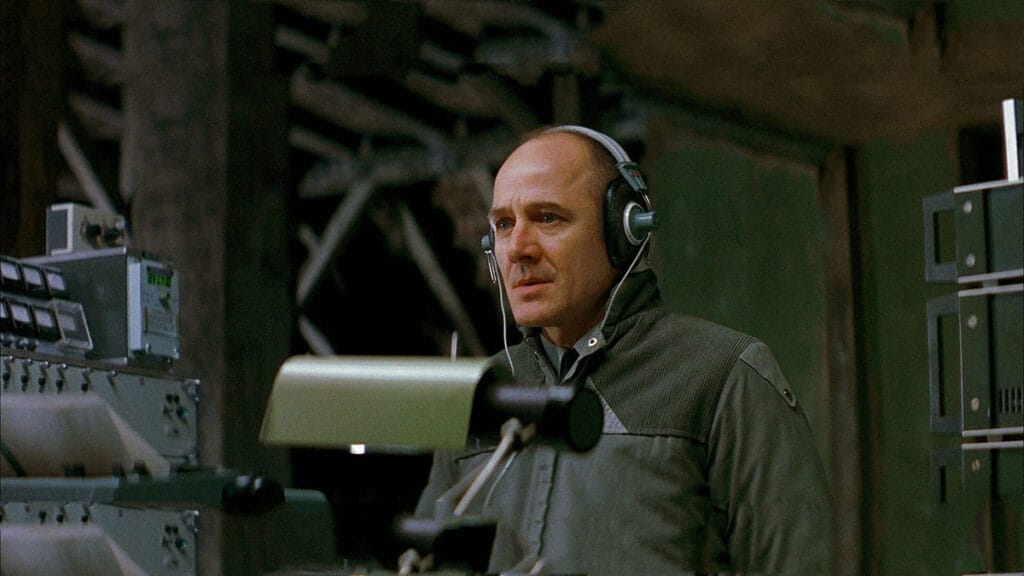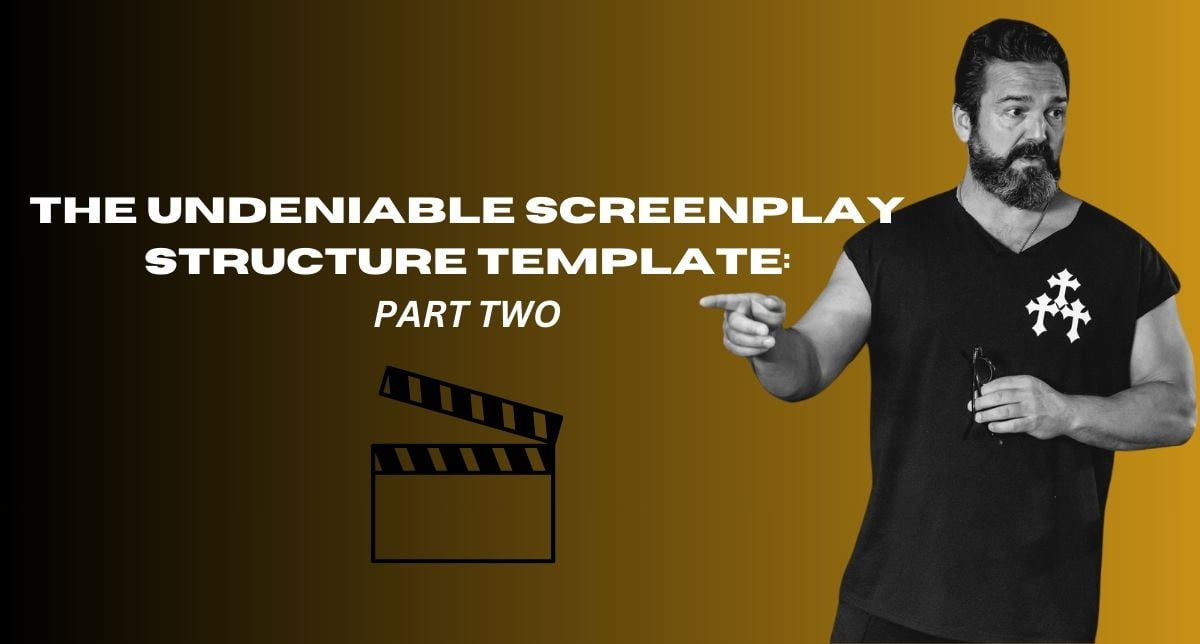Dear Storyteller,
Cinematic Storytelling is a battlefield, and the Inciting Incident is our first grenade.
But not all grenades are created equal, and if our script’s opening explosion is more of a dud than a bang, we’re going to lose our audience faster than we can say FADE OUT.
The Inciting Incident/Opportunity for Change is a crucial beat in my UNDENIABLE Screenplay Structure, one that does more than just shove our protagonist into action. It gives them a choice—a choice that could lead to their downfall or their triumph, depending on the path they take.
This isn’t just another step-by-step formula; it’s a hard-earned, battle-tested framework that I’ve honed through blood, sweat, and tears (and a few too many late-night coffee binges). It’s the structure I used to craft GUNN, the screenplay that grabbed the Gold Prize at the Page Awards, and DIRTY BOY, which not only got fully funded within a year, but also made it to a Gala Screening in Cannes.
Not saying this to blow my own trumpet, I’ve written many screenplays which nobody gave a damn about. My realisation was, that it is not about great dialogue or cool set pieces, it all comes down to structure and how that structure is defined by the protagonist’s choices. This is why I created the UNDENIABLE Screenplay Structure!
So, let’s dive into the Inciting Incident, tear it apart, and rebuild it into something that will make our stories impossible to ignore.
Inspiration from The Old Guard
Syd Field, the godfather of the three-act structure, coined the term ‘Inciting Incident’ (also known as the ‘Catalyst’) and anchored it firmly at the 10-15 minute mark of a screenplay.
He nailed the importance of this beat, recognising it as the moment that disrupts the protagonist’s status quo and sets the story in motion. But to me, Field’s approach can feel a bit quick. It’s impactful to the plot, but lacks depth. It’s a shove, yes, but sometimes it feels like a mechanical necessity rather than an organic, internal turning point.
Field’s Inciting Incident seems more about plot than character, and to my taste, that’s not enough.
With his obsessive focus on story and structure, Robert McKee rebranded the Inciting Incident as the ‘Point of No Return.’ It’s a powerful concept, emphasising the moment when the protagonist is forced into a new situation that they can’t escape.
McKee’s version is an event that slams the door on the old world and opens a new, more dangerous one. It’s brilliant in theory, but it often leaves out the character’s internal struggle.
What McKee doesn’t fully explore is the protagonist’s agency—their ability to make a moral choice in this moment—that will define their path.
The UNDENIABLE Upgrade: Inciting Incident as Opportunity for Internal Change
Now, let’s combine elements of these paradigms and rebuild them with something that perhaps can work more deeply for today’s audiences.
In my UNDENIABLE Screenplay Structure, the Inciting Incident isn’t just a plot device—it’s a catalyst for character development, a moment of choice that defines the protagonist’s journey from the get-go. Here’s how it works:
Here Comes the Spark
The Inciting Incident in my structure is the spark that shoves our protagonist out of their discontented world. But unlike in Field’s or McKee’s models, this isn’t just a random event—it’s a pivotal moment that presents a clear opportunity for change.
This is where the protagonist’s internal conflict and external world collide, creating a crossroads with no easy answers. It’s the moment where they’re not just reacting to the plot; they’re making a conscious choice that will reverberate throughout the story, driving the plot.
Seize or Reject?
The Inciting Incident must give the protagonist a choice. Will they seize the opportunity for change, or will they reject it, clinging to the safety of their old life? This isn’t just about adding drama; it’s about giving our story depth and emotional resonance.
The Inciting Incident should create tension, not just externally, but internally. The protagonist’s decision in this moment will set the tone for the rest of the screenplay, and it’s this choice that will keep your audience hooked.
The Refusal of Change
This is where the protagonist hesitates, resists, or outright refuses the opportunity presented to them. We have all experienced moments like this in our lives.
In life, we are often presented with the opportunity to change, but more often than not, in life, we reject it. That can’t happen in drama, or there is no drama. It probably shouldn’t happen in life either, but alas, our fear is often greater than our courage.
This is a crucial part of the journey that Field, McKee, and Vogler all touch on, but in my UNDENIABLE Screenplay Structure, it’s directly tied to the Inciting Incident.
The refusal isn’t just a beat—it’s a reflection of the protagonist’s fear, doubt, or unresolved internal conflict or trauma. It’s what makes them human, and it’s what will make their eventual decision to embrace change all the more powerful.
Let’s take a look at how this plays out in DIRTY BOY, my first feature, which received a Gala screening at Cannes earlier in 2024.

The Inciting Incident occurs when Isaac, our protagonist, witnesses the ritualistic murder of a refugee. This isn’t just a shocking event—it’s an opportunity for Isaac to uncover the dark underbelly of the strange cult he lives in.
Here’s where the UNDENIABLE Story Structure Template takes it up a notch: Isaac’s Inciting Incident is presented with a clear choice:
He could run, ignore what he’s seen, and continue living in denial, OR he could confront the truth and set off on a dangerous path of discovery.
His initial refusal to act, driven by fear and confusion, makes his eventual decision to investigate all the more compelling. It’s not just about moving the plot moving forward; it’s all propelled by Isaac’s internal journey—his grappling with fear ultimately results in the courage that he finds.
In GUNN, my PAGE Gold Prize-winning screenplay, the Inciting Incident comes when the protagonist, a Scottish fisherman with PTSD, finds out his estranged daughter is missing—kidnapped by some extremely nasty people. Here, the opportunity for change is clear: Gunn is given the possibility to extinguish the ghosts of his past (The wife and child he couldn’t save) and risk his life to save his remaining daughter.
It’s not just a decision to act—it’s a decision to change his destiny, to exonerate himself from the past, to face the very thing he’s been running from.
Some Classic Examples:
In the perfectly structured CASABLANCA, Rick’s inciting incident is the arrival of Ilsa, the woman who left him, breaking his heart, with her husband, Victor Laszlo, a resistance leader.
Rick’s opportunity for change is thrust upon him: Will he help Laszlo escape and let Ilsa (the one thing he unconsciously wants more than anything) go, or will he hold onto his selfishness and go with her? ‘I stick my neck out for nobody.’
His refusal to change is palpable; he wants nothing to do with her. But the depth of his internal conflict makes his eventual choice to help all the more resonant. It’s not just about Laszlo’s escape and the fate of the world; it’s about Rick’s redemption and rebirth as a selfless man.
In THE LIVES OF OTHERS, the inciting incident occurs when Stasi officer Gerd Wiesler is assigned to spy on a playwright suspected of dissidence. The opportunity for change comes when Wiesler, initially a loyal servant of the state, begins to empathise with, and even admire his targets.

His refusal to acknowledge his growing doubts, his clinging to duty over morality, sets up the internal conflict that drives the film’s powerful narrative. Eventually, his decision to protect the playwright marks a profound personal transformation, provoking a dangerous, moral decision.
In AMÉLIE, the inciting incident is when the lovely Audrey Tatou discovers a hidden box of childhood treasures in her apartment and decides to return it to its owner. The opportunity for change here is subtle but significant: will Amélie continue to live in her own world, avoiding real connections, or will she start engaging with the world around her?

Her initial refusal is in her cautious, indirect approach to the owner of the box, reflecting her fear of real emotional involvement. This sets up her beautiful journey of personal growth, where she gradually opens up to life and love.
Why This Stage Matters
A well-crafted Inciting Incident/Opportunity for Change doesn’t just propel our story forward; it creates a ripple effect that influences every subsequent beat of the story.
In the moment where our protagonist is tested, they must make a decision that will define their journey. It’s where plot and character collide, and it is our opportunity to create a narrative that’s both compelling and resonant.
In the UNDENIABLE Screenplay Structure Template, this beat isn’t just about what happens—it’s about what your protagonist chooses to do about it.
Don’t Just Write, Ignite!
If we want to write stories that stand out, that grab readers by the throat and don’t let go, we need to rethink our approach to the Inciting Incident. It’s not just about introducing conflict or setting the plot in motion—it’s about giving your protagonist a moment of choice, a chance to seize or reject the opportunity for change.
This is what makes our stories resonate on a deeper level, and what makes our protagonist’s journey not just a series of narrative events, but a true transformation.
Remember: the Inciting Incident is our spark. It can, and should, ignite a fire that will burn through the rest of your story, leaving nothing but unforgettable moments in its wake.
And when we do that, we won’t just have a screenplay—we’ll have created a story that’s undeniable.
Don’t forget to download my FREE guide; Reel Independence, where you can find the UNDENIABLE Screenplay Structure Template in all its glory!






